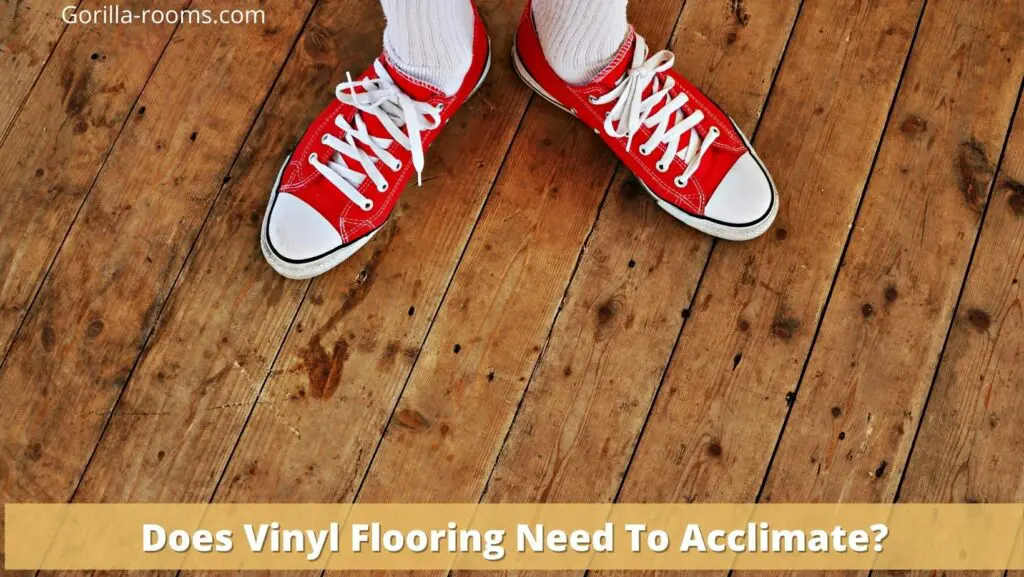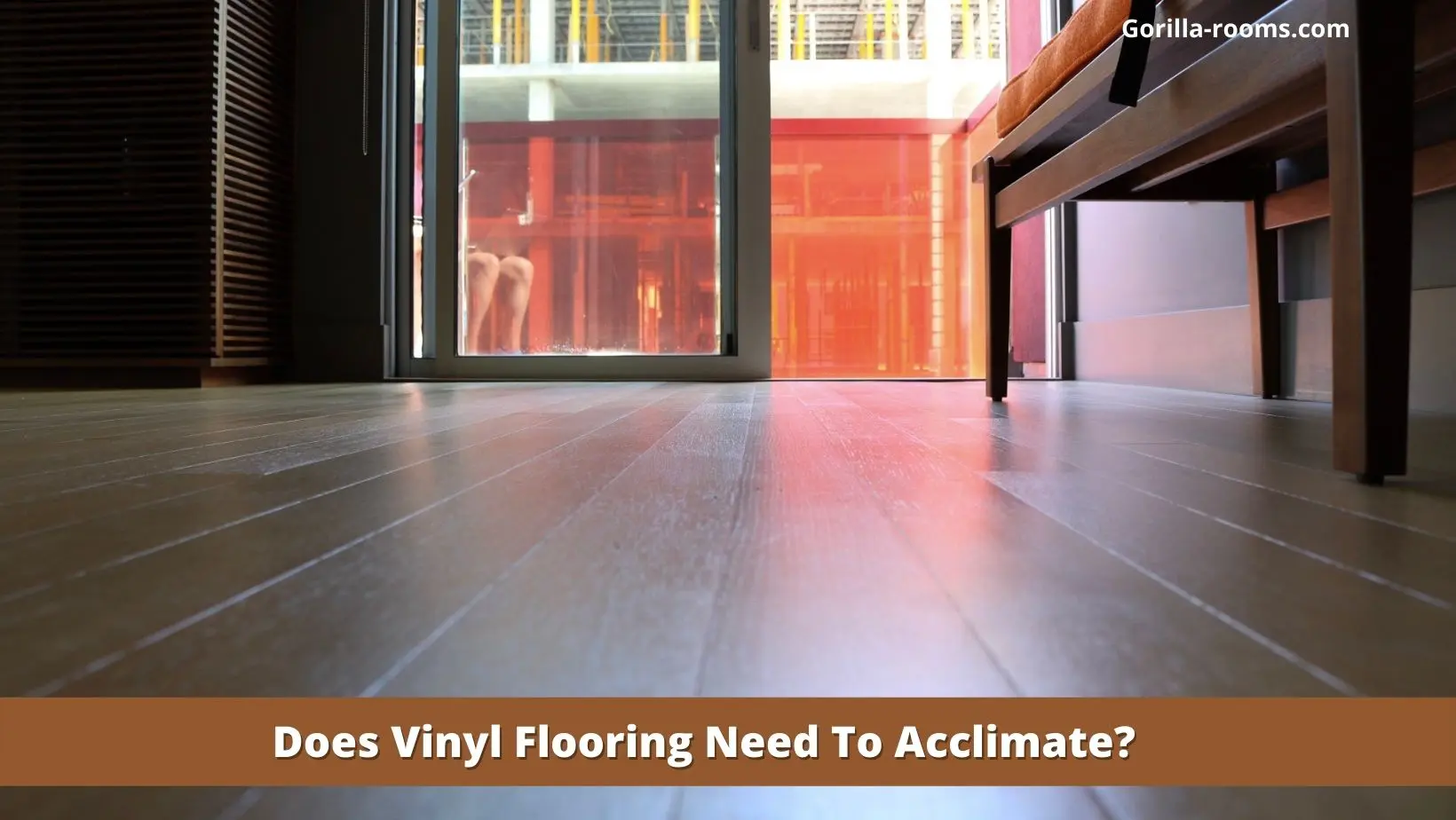One wonders, does vinyl flooring need to acclimate and how plastic plays a role in the revolution of industrial, domestics, and commercial purposes. Hands down, it is a unique yet affordable alternative to many other luxurious materials.
Many valuable forms of plastic offer a wide array of applications. PVC vinyl is one of those helpful plastic forms which are high in demand and use.
Vinyl flooring is a widespread application in which vinyl sheets or tiles are used to cover the floor. Before mentioning the details of vinyl flooring and its acclimation, let’s have a look at its history.
Chemists invented Vinyl, a high tensile strength plastic, in 1926. Due to its versatile uses and unique properties, Vinyl became a favorable choice for flooring in 1933
Vinyl flooring earned its recognition after world war two. As Vinyl is impervious to water, so it was considered the best choice. In this article, you will find an in-depth analysis of vinyl flooring and the need to acclimate. So here it begins;
Vinyl Flooring 101
The terms flooring means to cover the floor with vinyl sheets, vinyl tiles, or planks. These are different forms of Vinyl that are similar in their properties and applications.
The versatility of Vinyl makes it an irresistible material for several uses, especially flooring. You must be thinking, why do we need plastic to cover our floors
Well, it serves the aesthetic aim and is a scratch protectant, which means that it will protect the floor from abrasion, scratches, and stains.
It is available in different categories and forms. Two standard forms of vinyl flooring are Vinyl sheets and vinyl tiles. One can choose according to their preference; The sheets are large, flexible rolls with a seamless appearance.
Vinyl sheets consist of thin plastic with a back layering of felts or fiberglass. They are seamless and immune to water damage. Moreover, Vinyl is reluctant to water damage, and there’s no risk of the foster mob.
Does Vinyl Flooring Need To Acclimate?

Acclimation means adaption. Vinyl acclimation is a pre-installation process that helps to adjust flooring material.
Vinyl acclimation will help to prevent the vinyl flooring from damage and expansion.
If you ignore acclimation, it will deform the flooring, potentially harming its life span. The floor might shrink or can also develop gaps in it. Poor acclimation will destroy the seamless appearance of vinyl flooring.
What Happens If You Don’t Let Vinyl Plank Flooring Acclimate?
Apart from understanding the significance of acclimating, you should be aware of the consequences of not acclimating your vinyl plank flooring. Temperature fluctuations and high humidity levels can have a variety of effects on the flooring.
If you don’t acclimatize vinyl plank flooring, here are some facts to consider:
1- The tiles contract and expand
It takes some time to adjust to the new surroundings after taking the planks out of the box. If you don’t get the tiles to room temperature ahead of time, they will distort.
2- The space between the boards is called a gap
As previously stated, failure to acclimate causes plank deformation. As a result of the boards shrinking, gaps appear because the planks cannot fill those spaces.
3- Cleaning is difficult
If you don’t acclimate the planks, you’ll end up with holes and breaches in your planks. While it may appear fine at first, the pain will become apparent as you wipe the floor.
Installation Of Vinyl Flooring
Anyone can install vinyl flooring easily or can hire technicians to do the task. Installation of vinyl flooring has several steps that are performed to get a smooth finish
The duration for the installation of flooring and acclimation differs depending upon the form of Vinyl. Vinyl flooring typically takes about 1-2 days to complete.
Does Vinyl Plank Need Acclimation?
Vinyl plank floors are great for flooring. They are a fantastic option for flooring of bedrooms, kitchens, bathrooms, and laundry rooms.
They serve well when on proper acclimation.
Plank vinyl is durable, and it can even last longer if the acclimation is by glue. Glue or any adhesive helps to acclimate vinyl plank. Glue-down applications are usually better for acclimation in smaller areas.
A good quality plank glue takes 24 hours to dry, but for a quicker response, urethane glues are better. They only require 12-20 hours to dry.
Does Vinyl Sheet Acclimate?
Vinyl sheets manufactured in large rolls are great for flooring. The installation time is usually 1-2 days, but it is trickier to install than other vinyl forms.
Vinyl sheets acclimation is equally essential like plank acclimation. It will prevent it from expansion or shrinkage. It will also add to the longevity of vinyl flooring.
The acclimation period depends on various factors such as;
- Material of flooring
- Location
- Temperature index
- Humidity and moisture
- Climate changes
- Typically, vinyl flooring takes about 48 hours to acclimate.
Does Vinyl Tile Need to Acclimate
Yes, the vinyl tiles also need to acclimate like other standard vinyl forms. The acclimation will make sure that the floor is all set to a smooth and even appearance.
Vinyl tiles take about 48 hours to acclimate at room temperature. To seal the vinyl tile, you will need a liquid seam sealer. It will serve as an adhesive to stick the tiles together.
Comparison of different standard vinyl flooring
Here’s a comparison between the standard vinyl flooring forms.
VINYL SHEET; comes in rolls and is water repellant. It also has a seamless appearance and does not allow water to pass through. It also protects the floor from scratches.
VINYL PLANK; Whereas plank flooring comes in a plank design, which is similar to laminate flooring. It is installed plank by plank. Plank installation gives wooden flooring an illusion.
The core layer of plank flooring is thicker and consists of multi-layer PVC.
VINYL TILE; Vinyl tile gives a stone-like look. It has a back layering of fiberglass or felt. It consists of a thin core of PVC.
Acclimation Period
Vinyl needs to acclimate, and the acclimation periods differ depending on several parameters such as.
Flooring material; Luxury vinyl flooring takes a bit longer to acclimate than regular Vinyl. The nature of the fabric also matters as it decides the extent of ease or difficulty of installation.
Temperature; Vinyl flooring and its acclimation directly respond to the degree of temperature. It’s essential to keep the temperature at room degree before installation. It will not only make the installation easy but will also enhance the process of acclimation.
Humidity; It’s pretty vivid that water tends to damage the flooring. Although Vinyl is water-resistant, yet it is advisable to follow precautions.
Climate changes affect the humidity and temperature, so you should keep a weather tract before installing vinyl flooring.
Type of adhesive; Acclimation depends on the type of glue as well. Usually, the typical sealants take 48 hours to dry. Some bonds offer quicker acclimation.
Essential Conditions For Acclimating Indoors
The optimal environment for adjusting your plank flooring is indoors. Although the current luxury vinyl plank is designed to ensure long-term performance in even the most demanding conditions, it is subjected to certain acclimatization requirements, which include
- Temperatures on the ground range from 59 to 80 degrees Fahrenheit.
- Humidity levels ranging from 35 to 75 percent. A barometer can be used to determine the humidity levels in your room.
- If you’re putting them up on a slab, the concrete should be set for at least 60 days before you put them up, and a freshly painted wall should be cured for at least three days before you put them up.
Maintaining these circumstances allows the vinyl plank flooring to be conditioned to the building environment and the subfloor on which it will be installed. This is an important stage in the overall durability of your new gorgeous flooring, so don’t neglect it.
Conclusion
The nutshell conclusion of the above article does Vinyl flooring need to acclimate, is that vinyl flooring needs acclimation for its better adhesion. All properties of vinyl flooring depend upon how well the acclimation and installation are.
A vinyl flooring with an appropriate degree of acclimation will have an even appearance. It will also increase the lifespan of vinyl flooring. In this way, there will be seamless flooring.
Acclimation will help the vinyl flooring to adapt to the environment. Any distortion in its acclimation will result in amorphously oriented vinyl flooring. It will affect the longevity of Vinyl, reducing its fundamental characteristics.
FAQs
When can you walk on plank flooring?
The vinyl plank flooring takes about two days to completely dry. Its glue is widespread and applied on the whole subfloor. It would be best to give enough time for the adhesive to set; otherwise, the installation can fail.
Why is vinyl flooring acclimation important?
The importance of vinyl floor acclimation is no secret anymore. It is essential to acclimate Vinyl before its installation. It is the key to obtaining a smooth and beautiful look.
What Happens If Acclimation is not done?
In case if you don’t let the vinyl floor acclimate, the vinyl flooring will bear upon deformation. The floor will either expand or shrink, neither of which is favorable.

